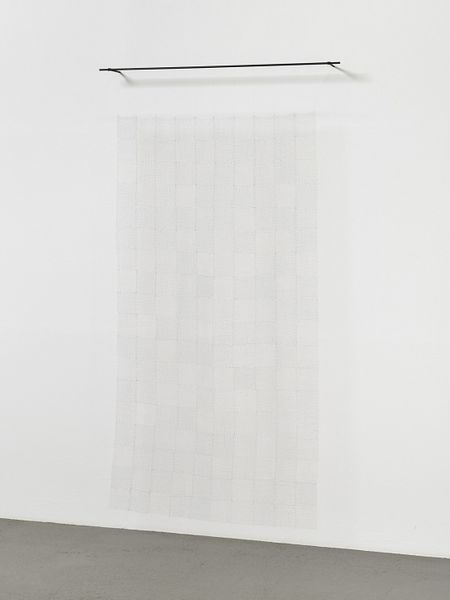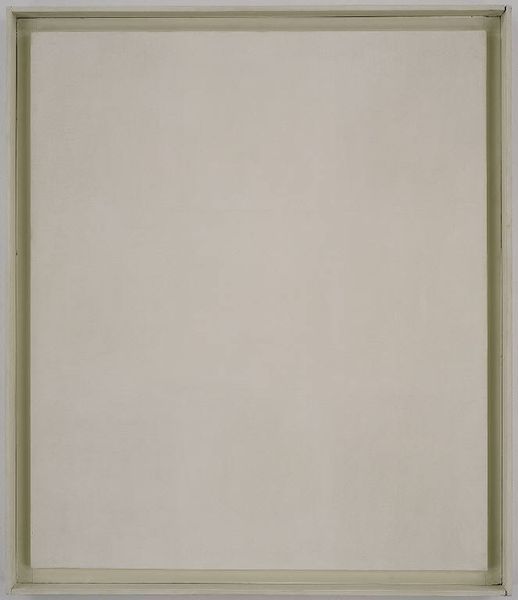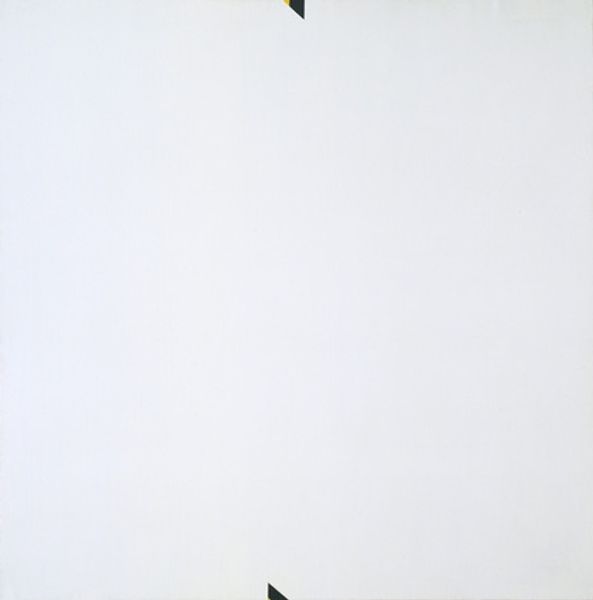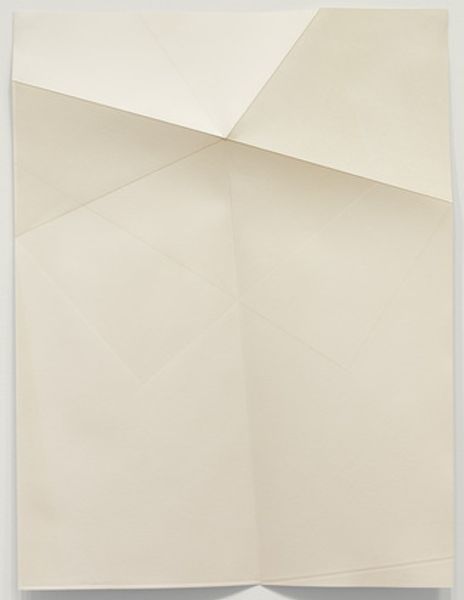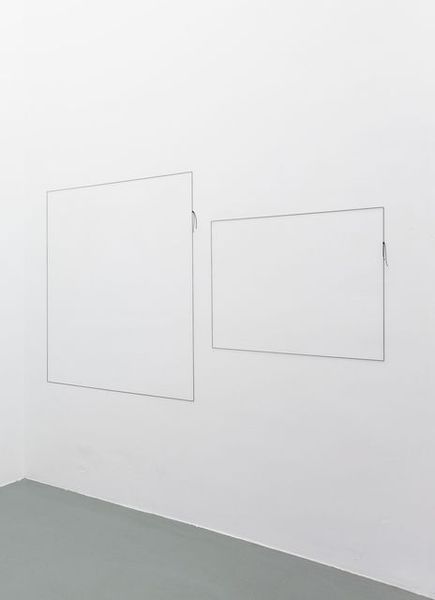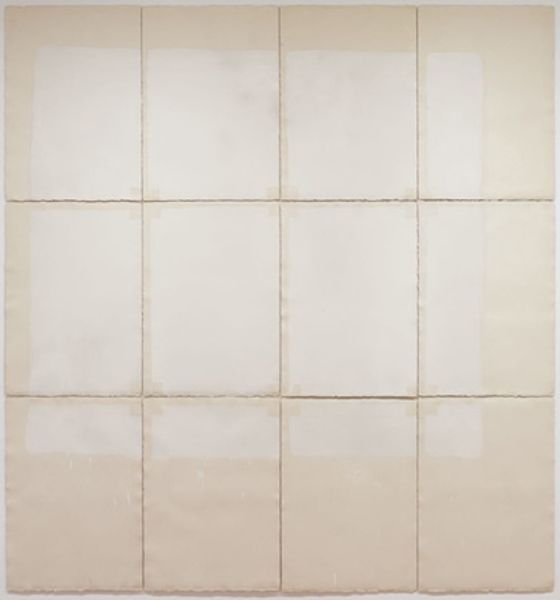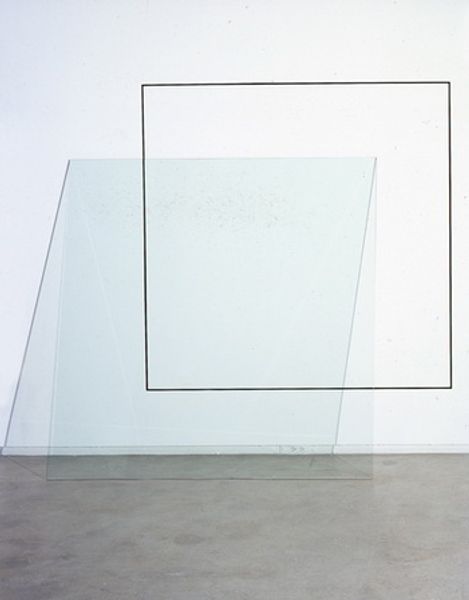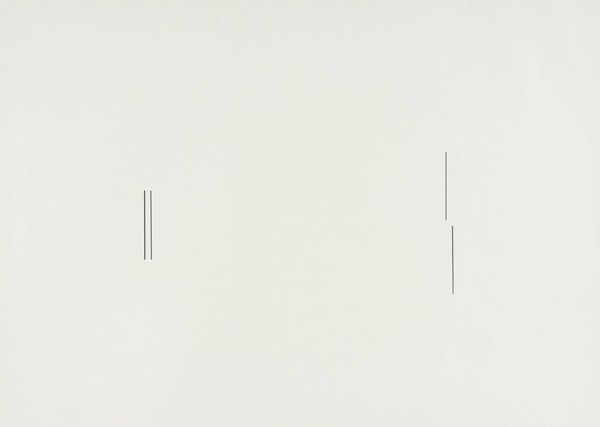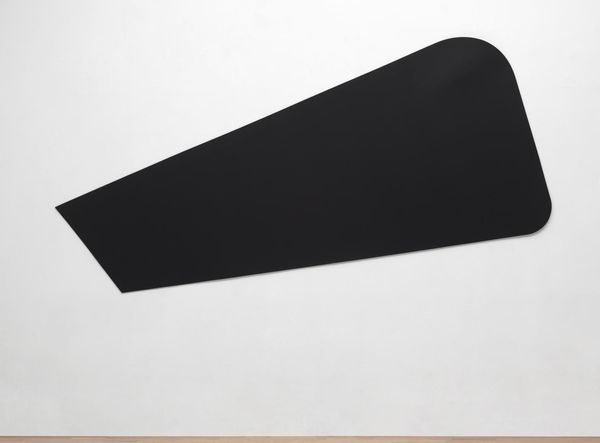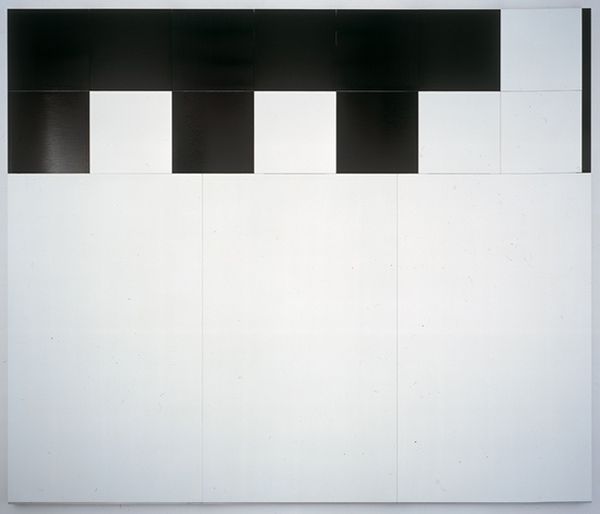
sculpture
#
conceptual-art
#
minimalism
#
geometric
#
sculpture
#
abstraction
#
line
Dimensions: overall: 182.88 × 182.88 cm (72 × 72 in.)
Copyright: National Gallery of Art: CC0 1.0
Editor: Right now, we're looking at Fred Sandback's "Blue Corner Piece" from 1970. It's a sculpture, and at first glance, it seems incredibly simple—almost like an outline. What do you see in this work, and how do you interpret such a minimalist gesture? Curator: I see Sandback using the visual language of geometry—the square, the corner—to play with our perception of space. The blue cord isn't just a line; it’s a symbol, almost a sign, that activates the corner. Do you feel that tension? Editor: Definitely, the cord creates a new plane, and I see how that alters the space. Curator: Think of corners: they have psychological weight—places of secrets, hidden dangers, but also beginnings, choices. The blue hints at the symbolic use of color, too, often linked to spirituality or contemplation. But why the choice of such a deliberately thin line? Editor: Is it meant to be dematerialized? Curator: Exactly! By making it so ephemeral, Sandback is perhaps questioning what sculpture can be, moving away from heavy, monumental forms. He invites us to complete the image in our minds, challenging our expectations and prompting a deeper awareness. Editor: I guess I always assumed minimalist art was about reducing things to their essence, but I see that Sandback may actually be inviting us to find meaning in emptiness. Curator: Precisely. Through this very restraint, Sandback opens up a space for dialogue between the object, architecture, and the observer's imagination. Hopefully you might view your own surroundings through a fresh lens. Editor: I definitely will! It is fascinating how a simple line can shift the whole dynamic of a space and change our perception of it. Thanks for illuminating the deeper significance.
Comments
No comments
Be the first to comment and join the conversation on the ultimate creative platform.
